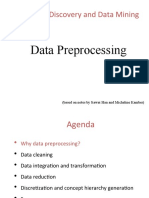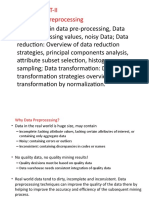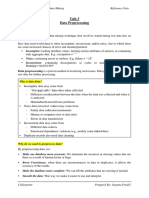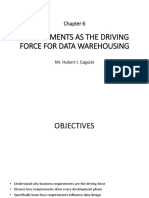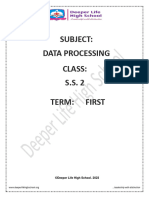0% found this document useful (0 votes)
13 views56 pagesData Preprocessing
Chapter 2 of the Data Mining document focuses on data preprocessing, emphasizing its importance due to the presence of dirty, incomplete, and noisy real-world data. It outlines various preprocessing tasks including data cleaning, integration, transformation, reduction, and discretization, along with methods to handle missing values and noise. The chapter also discusses dimensionality reduction techniques and the significance of maintaining data quality for effective data mining and analytics.
Uploaded by
Sangat RokayaCopyright
© © All Rights Reserved
We take content rights seriously. If you suspect this is your content, claim it here.
Available Formats
Download as PDF, TXT or read online on Scribd
0% found this document useful (0 votes)
13 views56 pagesData Preprocessing
Chapter 2 of the Data Mining document focuses on data preprocessing, emphasizing its importance due to the presence of dirty, incomplete, and noisy real-world data. It outlines various preprocessing tasks including data cleaning, integration, transformation, reduction, and discretization, along with methods to handle missing values and noise. The chapter also discusses dimensionality reduction techniques and the significance of maintaining data quality for effective data mining and analytics.
Uploaded by
Sangat RokayaCopyright
© © All Rights Reserved
We take content rights seriously. If you suspect this is your content, claim it here.
Available Formats
Download as PDF, TXT or read online on Scribd
/ 56






















